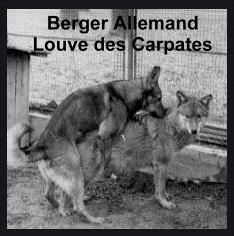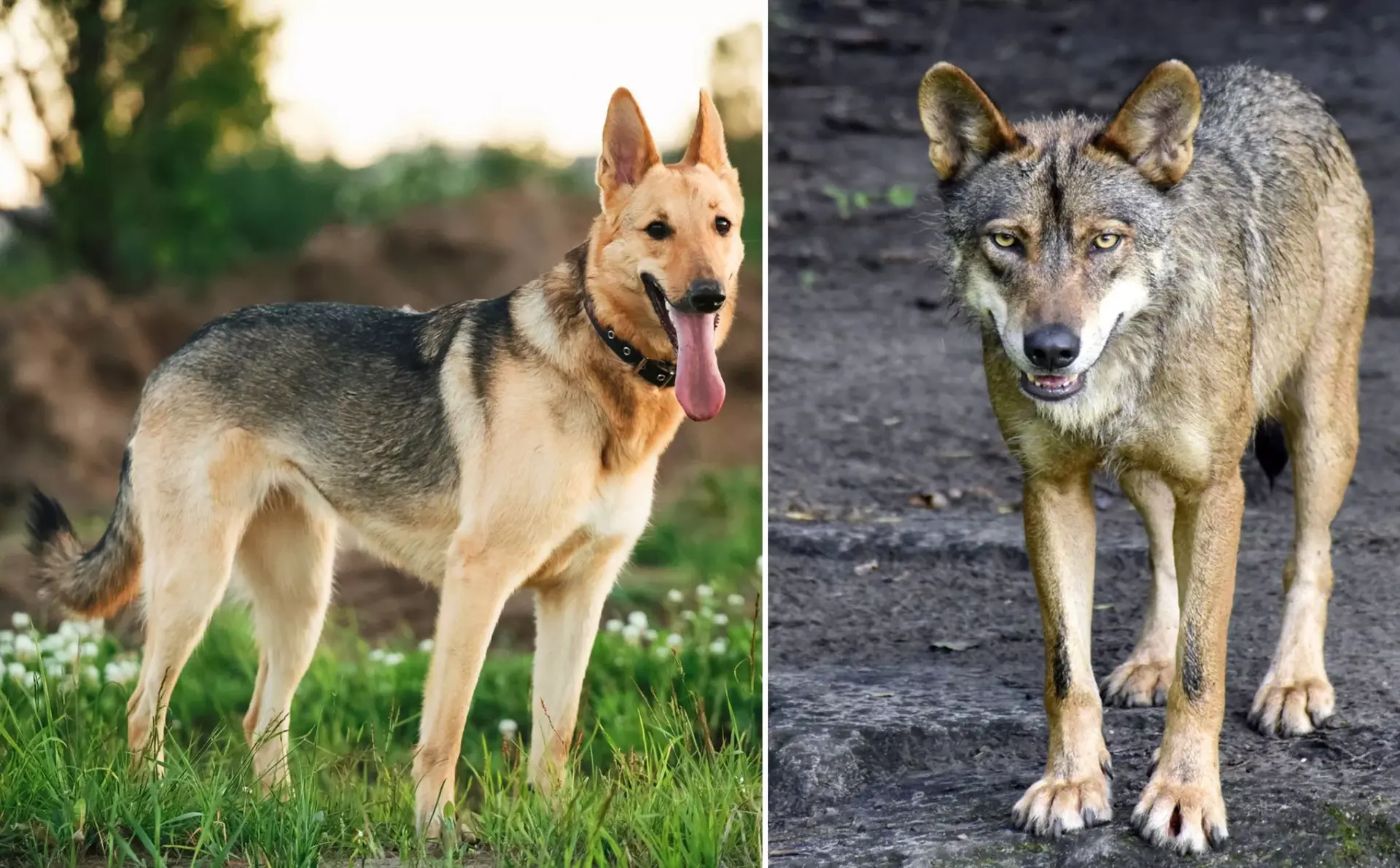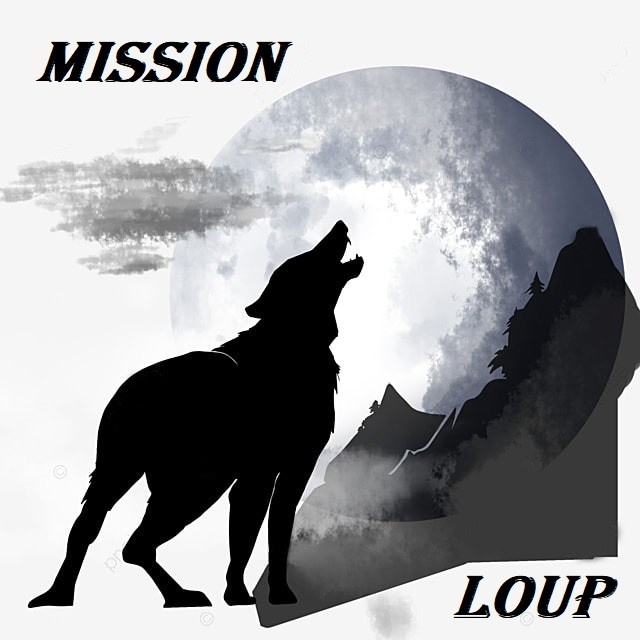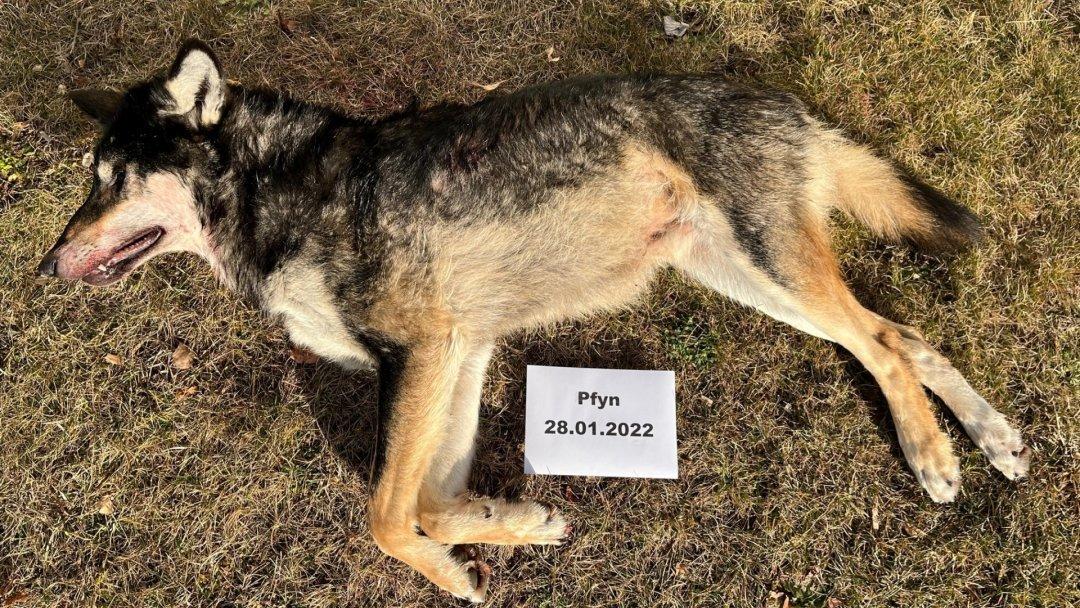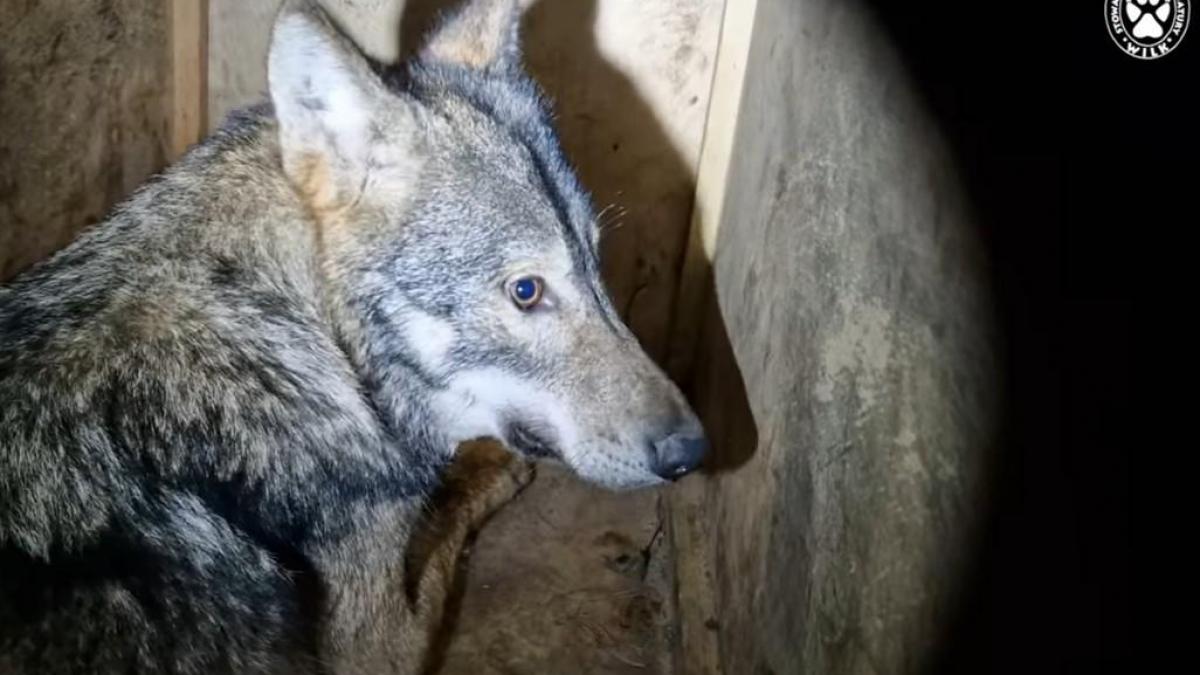Hybridization has always existed in nature, so it's not new or even rare. As you'll see below, it can even be beneficial in some cases. Hybridization involves two individuals of different species crossing, mating and giving birth to a litter, which we call "first-generation" hybridization. In itself, this cross-breeding is in no way problematic, either genetically or behaviorally speaking. In the wild, cross-bred individuals "re-soak" (1) with their own species, most of the time, and start again with their own genetic make-up. In a few words : it's nature.
In wolves, hybridization occurs when a male dog mates with a female wolf. In fact, since wolves and dogs are in fact subspecies, belonging to the same family (canis lupus), the word "hybridization" is not entirely appropriate. We should rather speak of "métissage" (interbreeding), or inter-fertilization (2). Such cross-breeding does not occur in Switzerland or France, but is becoming increasingly important in Italy, Romania and other Eastern European countries. Why is this happening ? The explanation is as simple as the culprit behind it : man's failure to manage (or extremely poor management of...) domestic dogs ! In fact, there are like 500,000 stray dogs in Italy, and almost 60,000 in Romania, a veritable scourge due to the failure to castrate/sterilize them, resulting in rapid, intensive reproduction and massive abandonment, all down to human stupidity. In Switzerland, a law forces all owners to fit their dogs with a microchip, which inevitably links them to their owner and complicates abandonment, as the dog is then sent back to square one, with potential legal proceedings ! But in the above-mentioned countries, there is no such obligation, leading many owners to get rid of their pet as soon as they no longer want it ! Since animals are still often treated as possessions, humans can get rid of them as soon as they realize the constraints and responsibilities their presence and management entail. In the interests of the dog - in the first place, as abandonment is considered mistreatment - but also of the wolf, it would therefore be urgent for the Italian government and other countries with a high rate of stray dogs, to take appropriate, simple measures, such as compulsory microship and castration of individuals, especially those still on the street.
Let's not forget, by the way, that Czechoslovakian or Saarloos wolfdogs are basically a cross between a she-wolf and a German shepherd. So we also used the wolf to create breeds we wanted to have. Today, these breeds are very much a part of our society - and without a hitch, since they rarely cause bites, unlike the Labrador or Jack Russel !
But what are the real consequences of crossbreeding ? Should we fear for the wolf's genetics or its behavior ? These are the questions many people are asking... Scientists fear that they could endanger the European wolf, genetically speaking, given the increase in cases. For the record, in Switzerland, all dead and found wolves, droppings or saliva samples taken from caracasses, have been systematically tested for hybridization since 1998! There have been no cases of first-generation hybrids detected, and only two identified as "second/third-generation hybrids": a wolf shot in Graubünden and the wolf poached in Mayoux (VS). Why do we speak of second or third generation ? Simply because hybrid wolves resulting from direct cross-breeding will, most of time, re-breed with their congeners later on ! They form a pack, and the pups born to them are then considered wolves, but of the second generation (direct descendants of hybrids) or of the third generation (descendants of the second generation). It's useful to know that in Switzerland, only a first-generation hybrid wolf is considered as such; second/third-generation hybrids are no longer considered as such. The culling of hybrid wolves in Switzerland is a preventive measure only, for the long-term health of the species and not based on any pseudo danger to humans ! If we're less cautious, we could question the merits of this measure, since it won't cause any real problems in Switzerland, either genetically or behaviorally. In Switzerland, wolves will only be able to reproduce with their own congeners (no stray dogs, extremely low rate of divaguants). And this will be especially the case for females, who, as we know, disperse much less far afield most of the time and therefore often remain close to their birthplace. Swiss law is intended to be cautious, which is understandable given the excesses of other countries.
The possible risks of wolf/dog cross-breeding are only really present if it becomes far too frequent (which is not to be feared in the immediate future). They would lead to a genetic alteration of the Canis Lupus species. In fact, humans have been responsible for numerous genetic crosses/manipulations in dogs, for a variety of reasons: greater variety of breeds, sizes, colors, morphologies or to support certain behavioral characteristics (hunting, protection, guidance, etc.). Today's domestic dog has seen its genetics deteriorate, leading to numerous health and even behavioral problems. Veterinarians are well aware of this problem, and would be better placed to talk about it than we are. Consequently, cross-breeding with genetically weakened dogs could have negative consequences on the wolf's genes. But, once again, such cross-breeding would have to take place repeatedly, between hybrids or stray dogs. This is not currently the case but, if we want to play devil's advocate, it could happen if stray dog numbers continue to grow, if wolf numbers fall sharply (as a result of intensive hunting/shooting, epidemics, freeing up of territories, etc.) or if there is a significant reduction in natural territories (over-exploitation by human). We must therefore be careful with dog management, urgently resolving the problem of stray dogs, but also be cautious with wolf management, particularly as regards massive regulation of numbers not based on science and the functioning of the species. Shooting the breeding pair results in the dispersal of young, often inexperienced wolves, and can lead to encounters with stray dogs in countries where they are not properly managed. Humans may well be to blame for such a situation, between the proliferation/non-management of domestic dogs on the one hand and, on the other, possibly poorly studied and applied management, which then becomes hunting without scientific hindsight and arbitrariness.
Hybridization also gives rise to fears of behavioral changes, i.e. a loss of fear of human. But is this really the case ? Belief or reality ? Based on the studies carried out, on the claims of authenticated behavioral veterinarians and on our knowledge of the animal world, the risks are extremely low. And there's a good reason for this : you can't change instincts, or even deeply-rooted behaviours, in the blink of an eye. So you need to cross-breed hybrids with stray dogs frequently, without re-breeding and over several generations. And then there's the immediate and frequent proximity to humans (anthropized environment). In Switzerland, these conditions do not exist, because it's impossible for a wolf to crossbreed with a stray/divagant dog over several generations. There is no risk at all, it's vital to make this clear and assimilate it.
The positive aspects of hybridization and cross-breeding, which are little-known, remain to be addressed. It has been possible to analyze lupine populations in many countries and regions of the world, and some have been found to be genetically resistant to certain viruses, bacteria and diseases ! In wolves that have recolonized territories on the outskirts of Chernobyl, an incredible phenomenon has been observed : they no longer have cancer, as their immune system has successfully countered it ! This discovery and fact could give canid populations greater resistance to diseases for which there are currently no veterinary solutions.
As you can see, hybridization and its consequences are far more complex than they appear, often overused. The reality is that hybridization is 100% natural, and if it exists, it's because there are some reasons for it, because there are benefits for the species. However, the disruptive element in this natural process is human, who thwarts nature with his extreme mismanagement of the animals he has domesticated. Natural, non-expansive hybridization poses no problem, but the drifts we are causing could have more harmful consequences. It's up to us to be vigilant on this point, as well as on the management of dogs and wolves in the future.
The final point also remains the identification of these individuals and the many misinterpretations, particularly with regard to differences in coat color. Sometimes, the first-generation hybrid may be unidentifiable, with few obvious physical changes. If the diagnosis of hybridization/mixing is made following analysis of droppings or saliva on a carcass, the problem then arises of identifying the individual, possibly within a pack, and shooting the right one - an almost impossible mission in this case ! Coat color can vary, and you can find out why by clicking here (french article). A wolf with a different coat color is not necessarily a hybrid. This was demonstrated by the case of a male wolf, shot at the end of January 2022 in the Bois de Finges (Valais/Switzerland), whose coat was particularly dark, almost black, but which, after thorough analysis, turned out to be a pure-bred wolf.
We hope that these few explanations of hybridization and interbreeding, their origins, their positive and negative consequences, and the difficulty of spotting hybrid individuals, will help you to master this subject better in the future.
Dictionary
(1) Re-soak: this consists in introducing genes from one breed into another through cross-breeding. Successive matings then enable these genes to be retained in the breed to be improved. In this case, the hybrid wolf individual, by subsequently mating with its own species, enables wolf genetics to return to its basics.
(2) Interfertility: the ability of two species or breeds to interbreed, giving birth to individuals that are themselves fertile.
Article: TT - Wolf Mission
Photo : illustration & SCPF Valais
